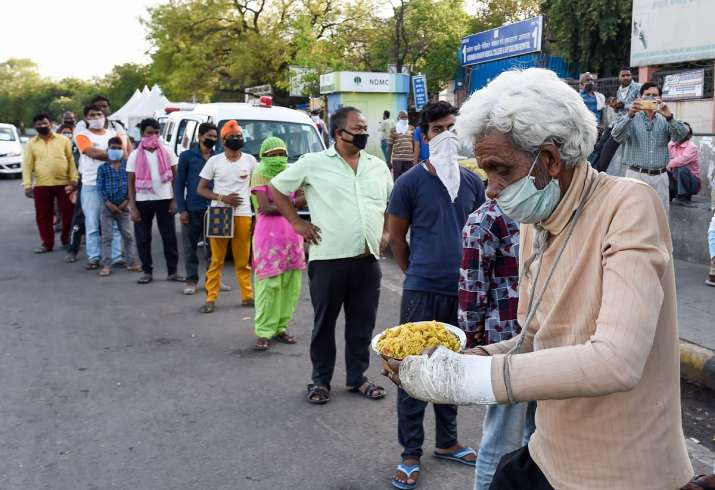
Nearly half of India's total COVID-19 cases emerged in Lockdown 4.0
The fourth phase of the coronavirus-triggered lockdown, which began on May 18, saw 85,974 COVID-19 cases till 8 am on Sunday (May 31), which is nearly half of the total cases reported in the country so far.

The fourth phase of the coronavirus-triggered lockdown, which began on May 18, saw 85,974 COVID-19 cases till 8 am on Sunday (May 31), which is nearly half of the total cases reported in the country so far.
Lockdown 4.0, which will end on May 31 midnight, has accounted for 47.20 per cent of the total coronavirus infection cases, number crunching from the Union Health Ministry data reveals.
The lockdown, which was first clamped on March 25 and spanned for 21 days, had registered 10,877 cases, while the second phase of the curbs that began on April 15 and stretched for 19 days till May 3, saw 31,094 cases.
The third phase of the lockdown that was in effect for 14 days ending on May 17, recorded 53,636 cases till 8 am of May 18. The country had registered 512 coronavirus infection cases till March 24.
India is the ninth worst-hit nation by the COVID-19 pandemic as of now.
Related news: India records highest single-day spike of 8,380 COVID-19 cases
The first case of COVID-19 in India was reported on January 30 from Kerala after a medical student of Wuhan university, who had returned to India, tested positive for the virus.
India registered its highest single-day spike of COVID-19 cases on Sunday, with 8,380 new infections reported in the last 24 hours, taking the countrys tally to 1,82,143, while the death toll rose to 5,164, according to the Union Health Ministry.
The number of active COVID-19 cases stood to 89,995, while 86,983 people have recovered and one patient has migrated, it said.
“Thus, around 47.75 per cent patients have recovered so far,” a senior Health Ministry official said.
With the fourth phase of lockdown ending on Sunday, the Home Ministry on Saturday said Unlock-1 will be initiated in the country from June 8 under which the nationwide lockdown will be relaxed to a great extent.
Announcing the new guidelines, the Union Home Ministry said a complete lockdown would continue till June 30 in areas identified as COVID-19 containment zones across the country, but restrictions would be lifted in a phased manner at other places after the ongoing fourth phase of the lockdown ends.
Delhi alone has more than 100 containment zones, while their count exceeds 3,000 in the worst-hit state Maharashtra.
Related news: COVID-19: Doubling time improves to 15.4 days; tally 1,73,763, toll 4,971
States and union territories will be allowed to impose additional curbs as per the ground situation about the pandemic, which has had a huge economic cost as well mainly due to the lockdown bringing most business activities to a standstill.
Some states said they would extend the lockdown by 2-4 weeks to save the lives of the people, but also announced some relaxations to revive the economy.
The Union Home Ministry said a night curfew will be in place from 9 pm to 5 am, except for essential services, and everyone will have to follow social distancing and hygiene-related guidelines including on wearing of face covers.
There would be no restriction on movement of people and goods within or between states from June 1 itself, while places of worship, hotels, restaurants and shopping malls will be allowed to open from June 8.
Schools, colleges and other educational institutions would be opened in the next phase after consultation with state and other local authorities as well as parents and other stakeholders.
A decision on reopening these institutions would be taken in July. The third phase would focus on re-starting international flights, metro rail, cinema halls, theatres, gymnasiums, swimming pools, entertainment parks, bars, auditoriums and assembly halls, as also large congregations for social, political, sports, entertainment, academic, cultural and religious functions.
The dates for allowing these activities would be decided later after assessing the situation.
(With inputs from agencies)

